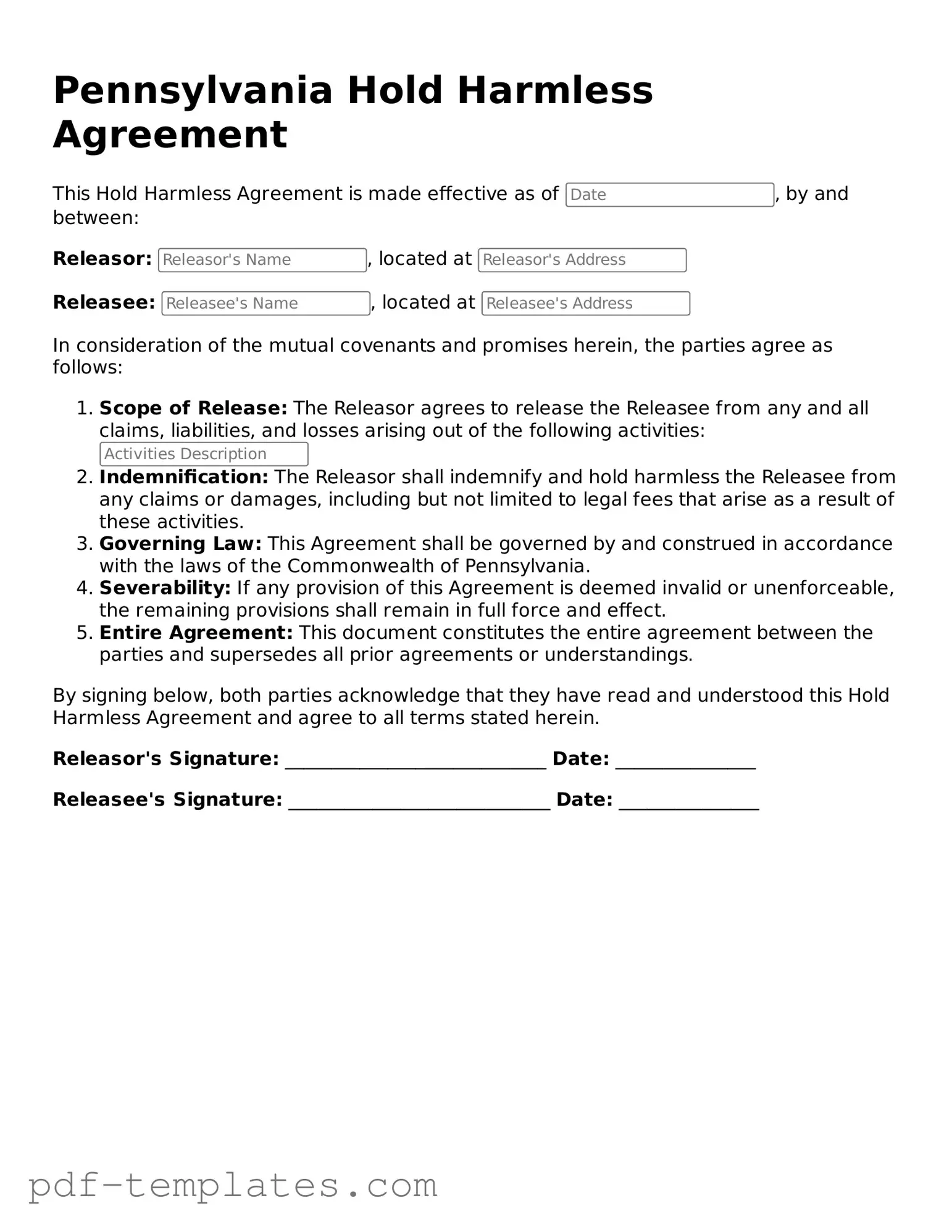The first document similar to the Pennsylvania Hold Harmless Agreement is the Liability Waiver. A liability waiver is often used by organizations to protect themselves from legal claims. Individuals sign these waivers to acknowledge that they understand the risks involved in an activity and agree not to hold the organization responsible for any injuries or damages. Like the Hold Harmless Agreement, it emphasizes personal responsibility and can be crucial for activities such as sports or events.
Another comparable document is the Indemnity Agreement. This agreement involves one party agreeing to compensate another for certain damages or losses. It serves to protect the indemnified party from financial harm. Similar to the Hold Harmless Agreement, the Indemnity Agreement is often used in contracts where one party may face risks associated with the actions of another party.
The Release of Liability form also shares similarities with the Hold Harmless Agreement. This document releases one party from liability for injuries or damages that may occur during a specific activity. Participants often sign this form before engaging in activities like recreational sports or adventure outings. Both documents aim to clarify responsibilities and limit legal exposure for the parties involved.
The Consent to Treat form is another related document. This form is commonly used in medical settings, allowing healthcare providers to treat patients while limiting their liability. It ensures that patients understand the risks associated with medical treatment. While its primary focus is on medical care, it shares the underlying principle of protecting one party from legal claims, much like the Hold Harmless Agreement.
Similarly, the Non-Disclosure Agreement (NDA) serves to protect sensitive information. While its focus is on confidentiality rather than liability, both documents establish boundaries and responsibilities. An NDA prevents one party from disclosing information that could harm the other party. This mutual understanding is essential, just as it is in a Hold Harmless Agreement.
The Service Agreement can also be likened to the Hold Harmless Agreement. This document outlines the terms of service between two parties, including liability clauses. It specifies what each party is responsible for and can include hold harmless provisions. Both documents aim to clarify expectations and protect parties from unforeseen risks.
Another similar document is the Rental Agreement. This contract outlines the terms under which one party rents property from another. It often includes clauses that limit liability for damages that may occur during the rental period. Like the Hold Harmless Agreement, it aims to protect the interests of both parties involved in the transaction.
The Partnership Agreement is also relevant. This document governs the relationship between business partners, detailing each partner's responsibilities and liabilities. It may include hold harmless provisions to protect partners from each other's actions. Both documents foster a clear understanding of roles and responsibilities, which is vital for successful collaboration.
Finally, the Employment Agreement shares some characteristics with the Hold Harmless Agreement. This document outlines the terms of employment, including job responsibilities and liabilities. It often includes clauses that protect the employer from claims related to the employee's actions. Both agreements serve to delineate responsibilities and mitigate risks for all parties involved.
